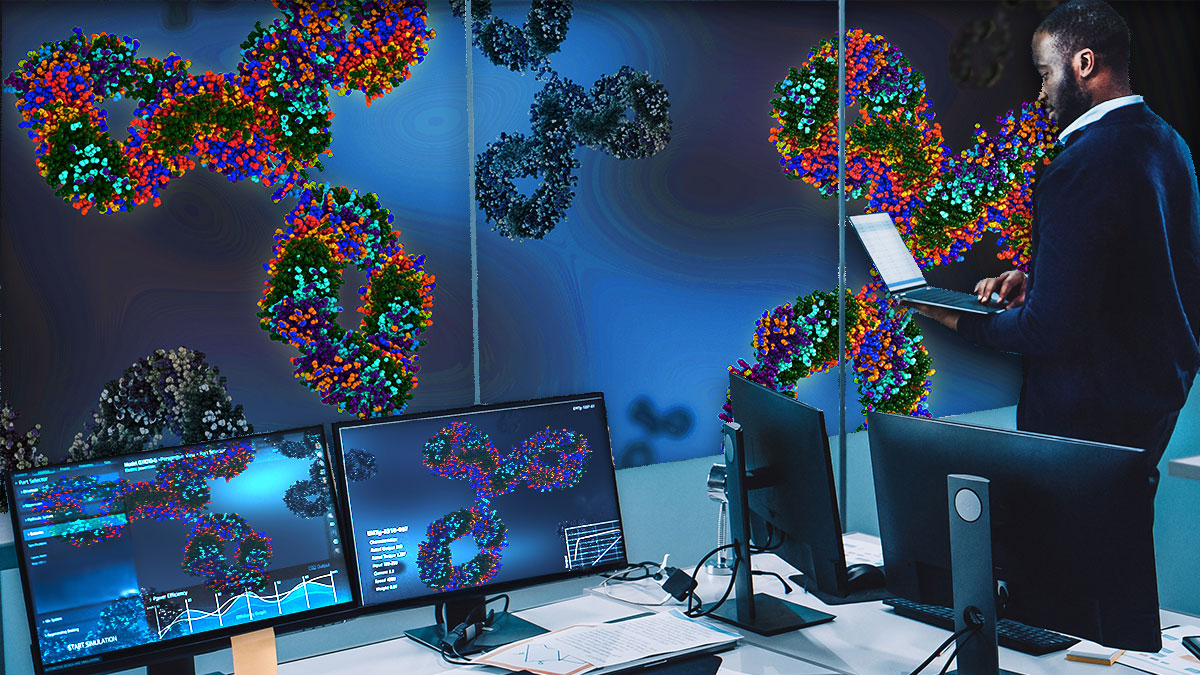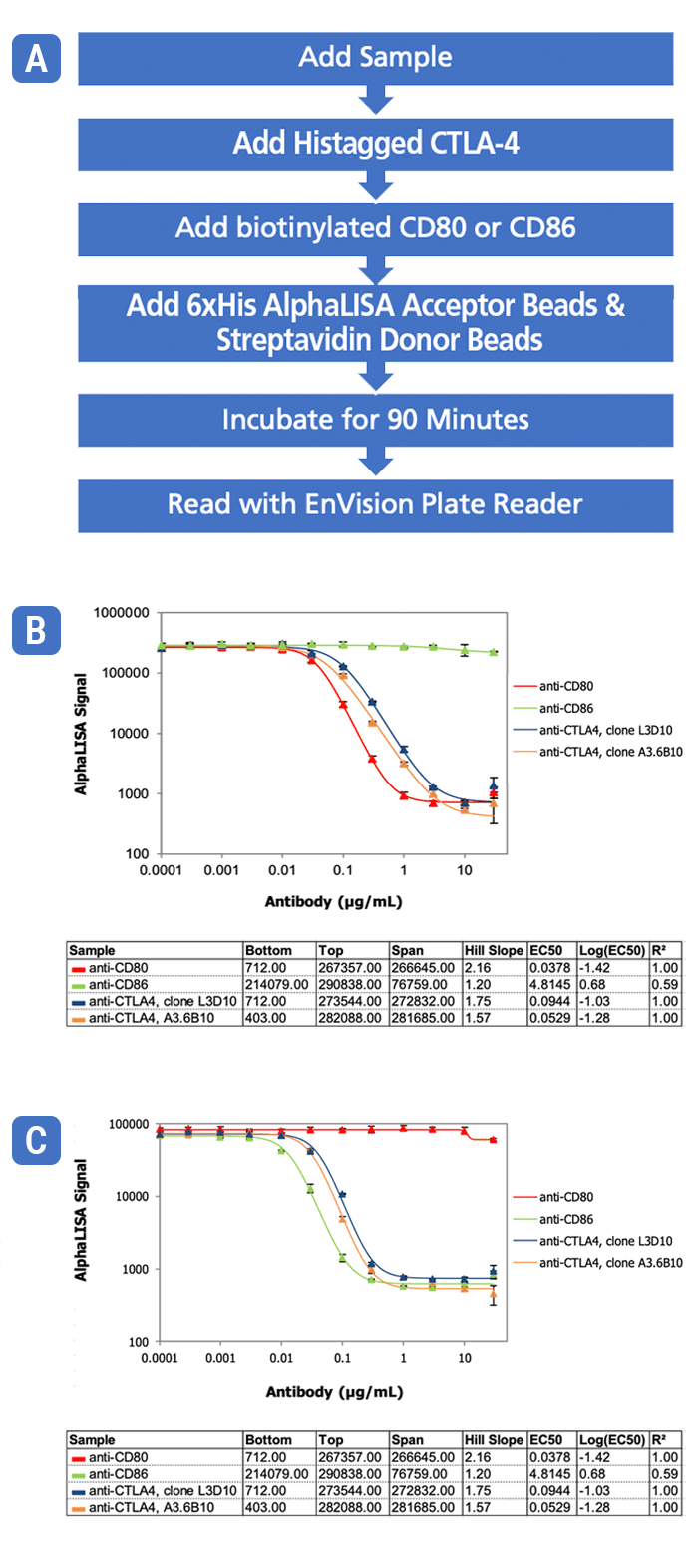09 April 2023 | Sunday | News

Source : PerkinElmer
Although hybridoma technology remains one of the most common techniques for antibody production, the generation and screening of hybridomas can be time-consuming, labor intensive, and produces variable scientific results.
To overcome these bottlenecks, we have developed a fully automated workflow that can streamline hybridoma screening and improve mAb discovery by utilizing homogeneous immunoassays, automated liquid handling, multimode detection, and data analysis.
Using this workflow, we developed an automated primary screening assay for an anti-CTLA-4 hybridoma mouse cell line. The assay utilized off-the-shelf AlphaLISA® reagents, BioLegend®antibodies, automated liquid handling, and multimode detection to ensure that cells expressing mAbs that block CTLA-4/CD80 or CD86 interaction are identified as hits in the screen (Figure 1). Please note, this is for research use only and not for use in diagnostic procedures.

Figure 1: AlphaLISA CTLA-4/CD80 and CTLA-4/CD86 assay workflow (A) and CTLA-4/CD80 assay data (B) CTLA-4/CD86 assay data (C). The profiled hybridoma (anti-CTLA-4, clone A3.6B10) disrupts both protein-protein interactions, demonstrating its function to impact biological processes.
For the detection of hybridoma mAbs, our workflow utilizes antigen-binding AlphaLISA assays. AlphaLISA (Amplified Luminescent Proximity Homogeneous Assay) is a no-wash, bead-based immunoassay technology that uses donor and acceptor beads to generate a luminescent signal to study biomolecular interactions in a microplate format. When the beads come into close proximity through the binding of CTLA-4 and CD80 or CD86 partners, a cascade of chemical reactions occurs, and a signal is generated by production of singlet oxygen. Cells that secrete high levels of the desired hybridoma mAb will block the CTLA-4 and CD80 or CD86 interaction and produce an AlphaLISA signal decrease in a dose-dependent manner.
Notably, this assay format affords numerous advantages over using ELISAs, with the removal of wash steps all together, a large dynamic range and high sensitivity meaning less dilution steps, a short incubation time, and the ability to work with complex matrices.
AlphaLISA assays can be handled using the JANUS® automated liquid handling workstation and read on the EnVision® multimode plate reader to support high-throughput screening demands. An automated approach allows for easy miniaturization which make the assay cost-effective and yield more data in a single run.
Lastly, data analysis can be carried out using the MyAssays® platform. The software can be used to determine well locations of positive hits and to generate best fit and IC50/EC50 values from AlphaLISA biomarker or binding kits.
The collection of platforms described above represents an advancement in hybridoma screening and offers the flexibility to adapt any mAb discovery platform to an efficient, automated workflow.
To learn about the protocol in more detail, download our application note.
© 2025 Biopharma Boardroom. All Rights Reserved.